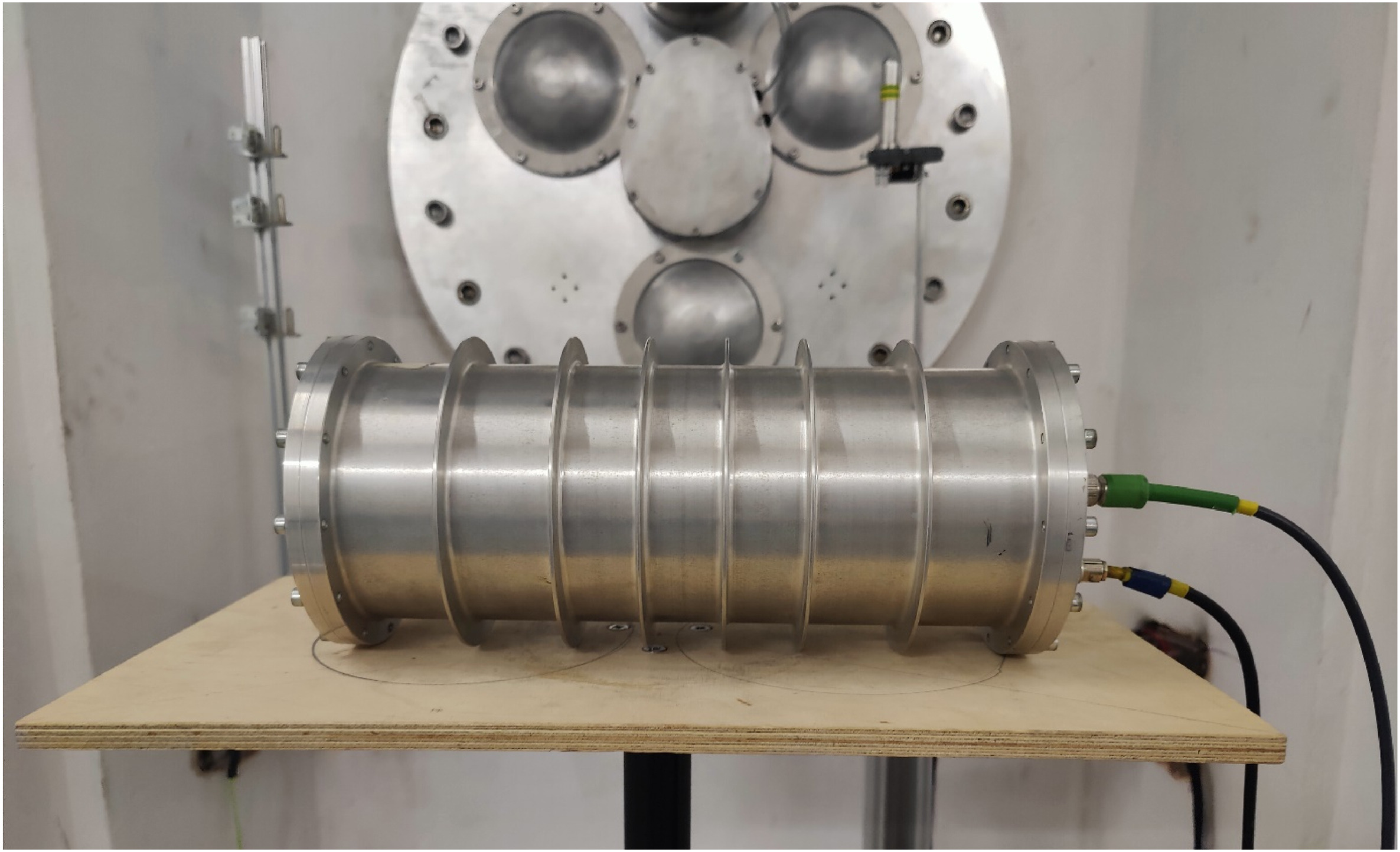
NCBJ scientists develop a modern measurement system for radiological protection and determining exposure to ionising radiation
29-10-2025
Radiation exposure monitoring systems are essential in many workplaces. Methods capable of detecting different types of radiation and determining their dose in real time are constantly being developed. Scientists from the Radiological Metrology and Biomedical Physics Division of the National Centre for Nuclear Research (NCBJ) have designed, built and tested a modern system based on a recombination ionisation chamber, which can be used in medicine, but also in emergency situations involving the use of nuclear weapons or nuclear facility accidents.
Ionisation chambers have been used as radiation detectors for over 100 years. They are capable of registering radiation that causes ionisation of the gas inside. As a result of radiation, ions and free electrons are formed in the chamber, which drift towards the electrodes under the influence of an electric field. Furthermore, thanks to the phenomenon of local recombination of gas ions, it is possible to distinguish between radiation components in terms of their linear energy transfer (LET). This, in turn, allows for the determination of quantities that are important in radiological protection, primarily the radiation quality factor, which provides precise information about biological harmfulness. Recombination ionisation chambers are unique because they allow the study of unknown radiation fields, in particular gamma-neutron fields with a wide range of component energies. This technology has been most extensively tested in the form of the REM-2 recombination ionisation chamber, in which both the electrodes and the gas filling the chamber have an atomic composition similar to that of human tissue. By being able to determine the components of the radiation field and their biological effectiveness, the recombination chamber allows the dose equivalent to be determined for a person exposed to ionising radiation in which the detector is placed, without requiring knowledge of the characteristics of the radiation field. This is crucial in many workplaces, especially those related to nuclear medicine. One such place is boron neutron capture therapy (BNCT) research facilities, where neutron radiation contributes significantly to the total radiation dose.
Research on boron neutron capture therapy is being conducted at the National Centre for Nuclear Research (NCBJ), using neutron beams from the MARIA research nuclear reactor. Safety is an important element of the research, which is why specialists from the Radiological Metrology and Biomedical Physics Division of the NCBJ have developed a modern dosimetry measurement system based on a new generation of REM-3 recombination chambers. A key component is a newly developed data processing algorithm, which has reduced measurement time by several dozen times and allows the measurements themselves to be automated.
In order to design a new measurement system, scientists from NCBJ conducted research on the response of REM-2 detectors to gamma and neutron radiation, depending on the gas present in the detector and the material from which the electrodes were made. REM-2 chambers can be filled with various gases, such as methane, ethane, propane or nitrogen, as well as mixtures of these, resulting in different relative sensitivities to neutron radiation. The research showed that ethane (C2H6) is the optimal filling gas. The electrodes, in turn, usually consist of a tissue-equivalent material, known as MRT, which contains a large amount of hydrogen. In the new chamber, conductive polypropylene was used for the construction of the electrodes. At the same time, work was underway on a new data processing algorithm based on a modern approach to measuring charge changes under the influence of radiation. Finally, more than 10 designs for the REM-3 chamber were developed, of which the three most promising were built. The selected designs differed, for example, in the arrangement and number of electrodes, as well as the construction of the entire interior of the chamber. One of the variants was a chamber divided into two areas, which allows for real-time estimation of the spatial dose equivalent without the need for additional equipment. The finished systems were also tested in reactor radiation fields, including the H2 horizontal channel beam and the pumping station of the MARIA research reactor.
A new detector design based on a REM-3 type recombination ionisation chamber allows for more precise determination of the spatial dose equivalent in mixed radiation fields. The unique design allows the system to operate in the presence of unstable and variable radiation fields, and the newly developed software reduces measurement time by up to several dozen times and automates the entire process. Changing the gas filling the chamber and the electrode material further balances the detector's sensitivity to neutron and gamma radiation. Although work on the development of this type of detector will continue, the system developed by NCBJ specialists is already a promising device that can be used to monitor the exposure of workers to ionising radiation, e.g. in BNCT therapy facilities. This system can also be an effective tool for determining the exposure of the population in emergency situations, such as nuclear accidents or the use of nuclear weapons.
The detailed results of the research are available in the publication: M. A. Gryziński, M. Kuć, A recombination chamber-based measurement system for radiation protection in neutron medical and research centers, Applied Radiation and Isotopes, Volume 225, 2025, 112047, https://doi.org/10.1016/j.apradiso.2025.112047.




